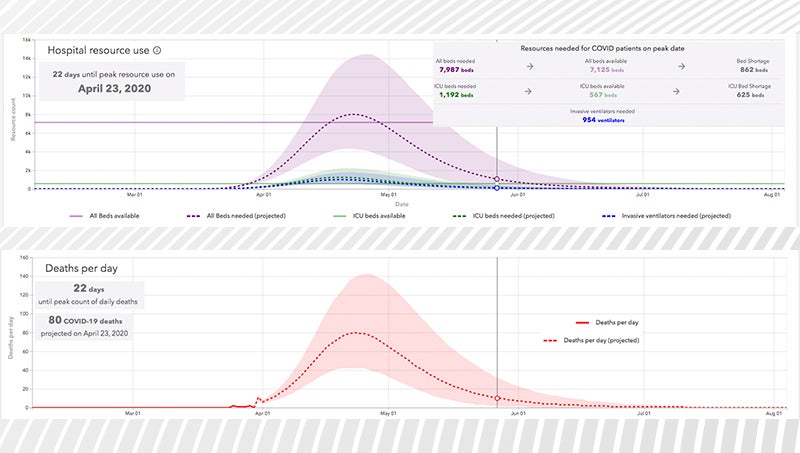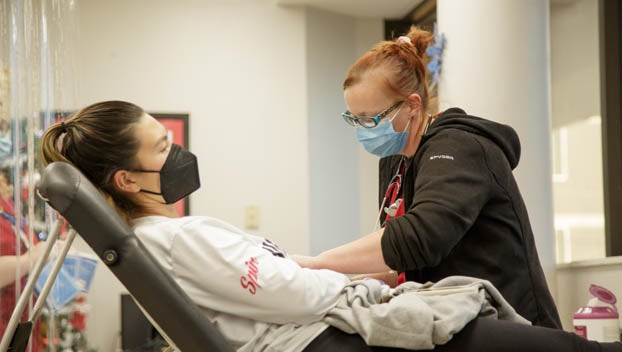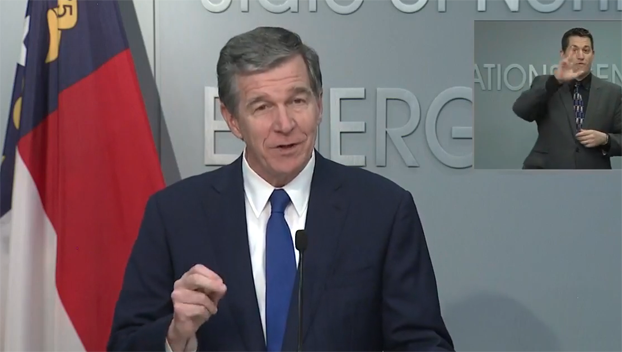Analysis: NC could see up to 80 deaths per day
Published 8:04 pm Tuesday, March 31, 2020

- (Institute for Health Metrics and Evaluation)
|
Getting your Trinity Audio player ready...
|
The peak of COVID-19 cases in North Carolina is weeks away, according to health care forecasters.
A forecast model released by the Institute for Health Metrics and Evaluation gives a state-by-state analysis of when the virus will peak and the potential number of fatalities, as well as an estimate of hospital bed shortages as the peak approaches.
For North Carolina, IMHE predicts the virus will peak three weeks from now, on April 23, and the state could see as many as 80 deaths per day over the course of that week.
“Our estimated trajectory of COVID-19 deaths assumes continued and uninterrupted vigilance by the general public, hospital and health workers, and government agencies,” said Dr. Christopher Murray, director of the Institute for Health Metrics and Evaluation at the University of Washington’s School of Medicine. “The trajectory of the pandemic will change — and dramatically for the worse — if people ease up on social distancing or relax with other precautions. We encourage everyone to adhere to those precautions to help save lives.”
IMHE is an independent global health research center; its analysis was developed in response to requests from the University of Washington School of Medicine and other U.S. hospital systems and state governments working to determine when COVID-19 would overwhelm their ability to care for patients, according to the IMHE website. The analysis is based on an extensive range of information and data sources, including:
- Local governments, national governments and the World Health Organization;
- Government declarations on implementation of social distancing policies;
- Data from the American Hospital Association on licensed hospital bed and ICU capacity and average annual utilization of these services by state;
- Data on COVID-19-related demand for ICU services in the United States;
- Age-specific death rate data from China, Italy, South Korea and the U.S.
The forecast extends to Aug. 4 and estimates that between 38,000 and 162,000 COVID-19-related deaths may result in the U.S. According to the analysis, 2,537 of those deaths will be in North Carolina — a high range puts that number at 5,054 deaths; best-case scenario, that number falls to 1,287 deaths. On Tuesday afternoon, the total number of deaths in the state was eight.
The forecast predicts that 41 states will need more ICU beds than they currently have available and that 11 states may need to increase their ICU beds by 50% or more to meet patient needs before the current wave of the pandemic ends — a factor that greatly affects each state’s outcome.
The reports states North Carolina will need 7,987 hospital beds on the peak date, but has 7,125 beds statewide, creating a shortage of 862 beds. The state has 567 ICU beds, but 1,192 ICU beds will be needed on the peak date, meaning there will be a shortage of 625 beds. It is unclear how many ventilators hospitals across the state have, but the report estimates 954 will be needed.
According to the North Carolina Healthcare Association, which represents hospitals around the state, the state has the ability to flex up to 3,514 licensed ICU beds, which could positively impact total number of deaths statewide.
In a press conference Tuesday, Dr. Mandy Cohen, North Carolina Secretary of Department of Health and Human Services, said the state is working on a surge capacity plan in preparation for the peak. Gov. Roy Cooper, in the same press conference, said the state has enlisted the help of the National Guard and Army Corps of Engineers to study the logistics of opening up hospital facilities in alternative areas in response to any shortage.
“In addition to a large number of deaths from COVID-19, the epidemic in the U.S. will place a load well beyond the current capacity of hospitals to manage, especially for ICU care. These estimates can help inform the development and implementation of strategies to mitigate this gap, including reducing non-COVID-19 demand for services and temporarily increasing system capacity. These are urgently needed given that peak volumes are estimated to be only three weeks away. The estimated excess demand on hospital systems is predicated on the enactment of social distancing measures in all states that have not done so already within the next week and maintenance of these measures throughout the epidemic, emphasizing the importance of implementing, enforcing and maintaining these measures to mitigate hospital system overload and prevent deaths,” Murray states on the IMHE website.
To view the analysis, visit covid19.healthdata.org/projections.




